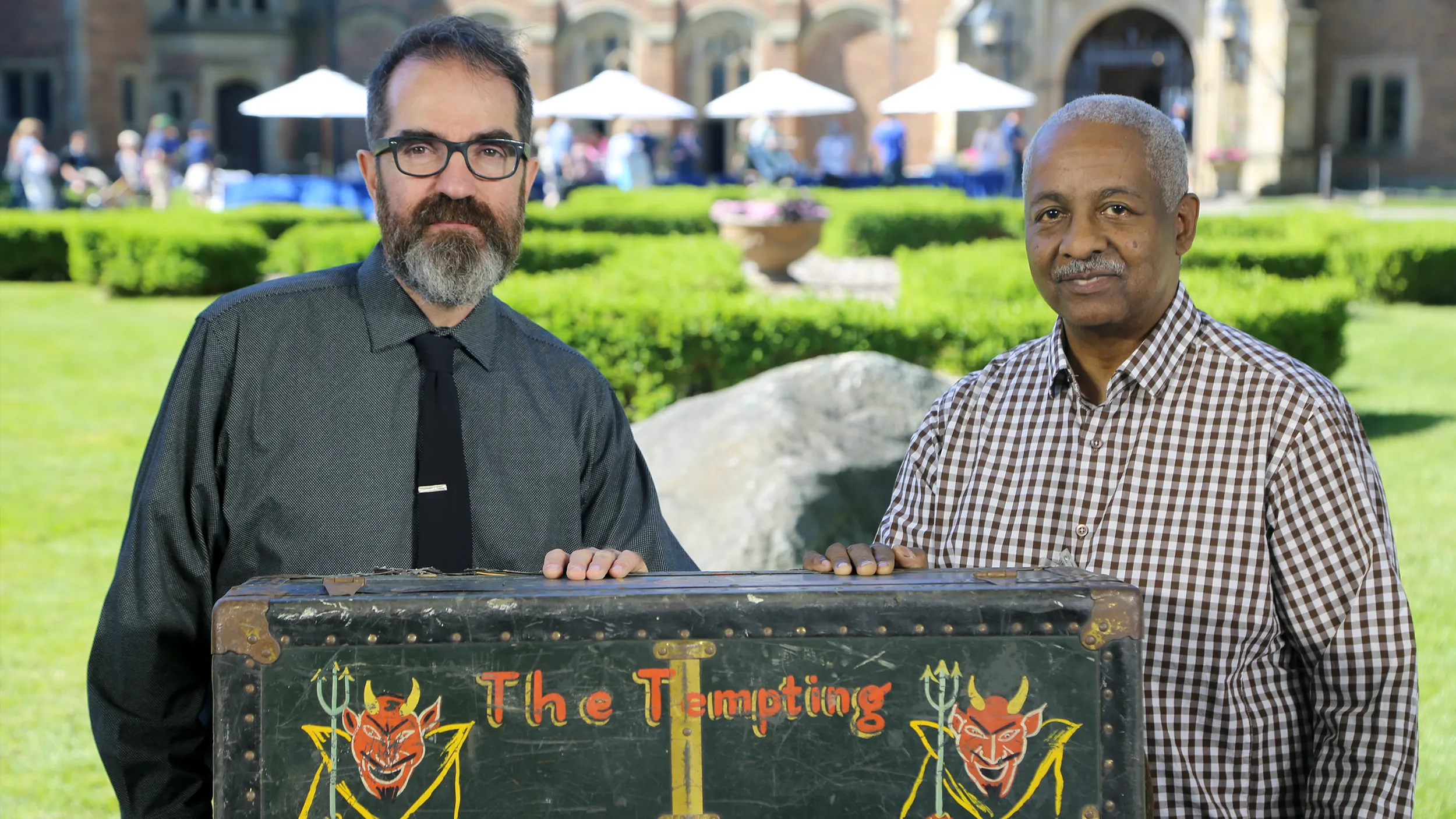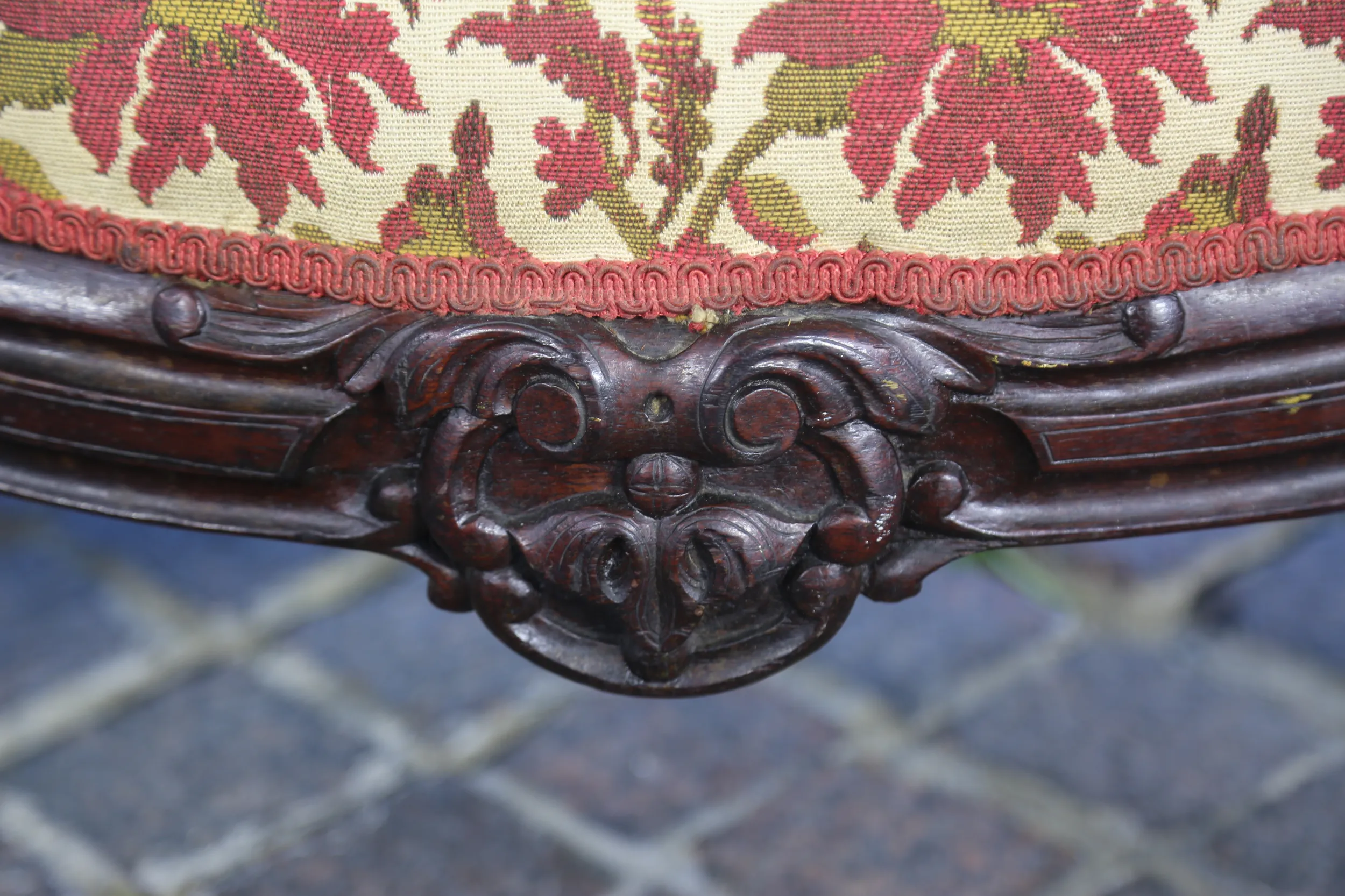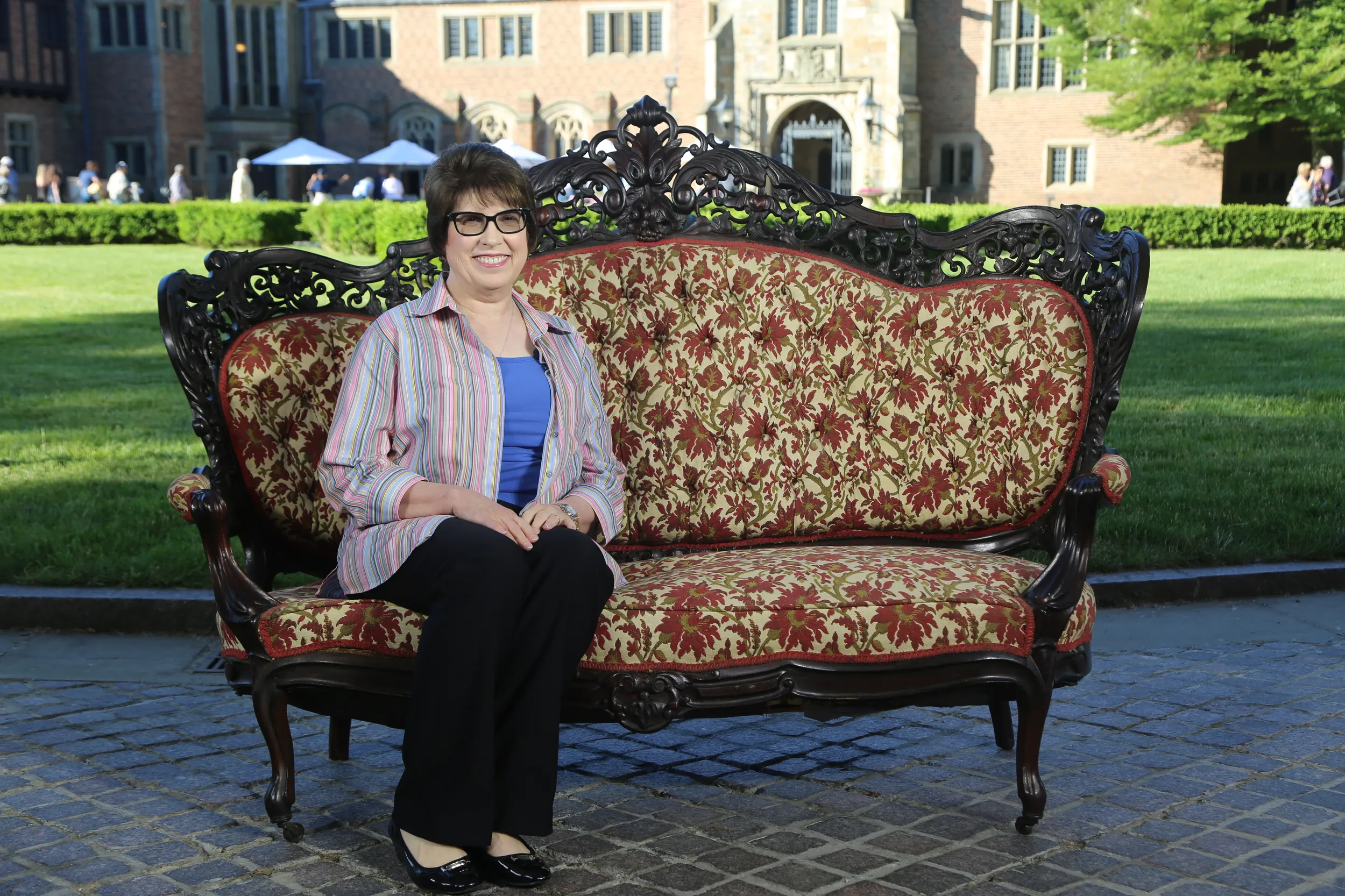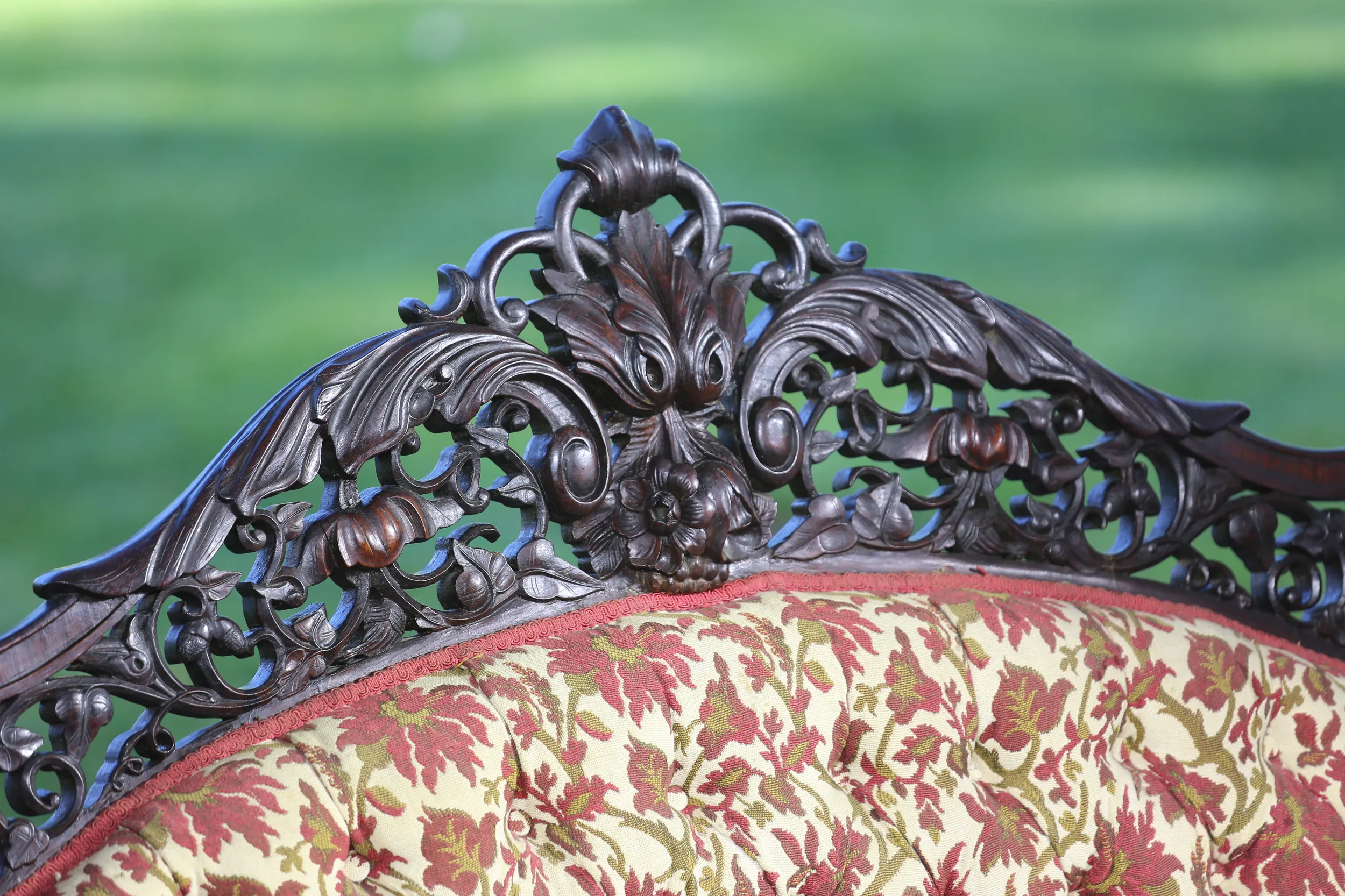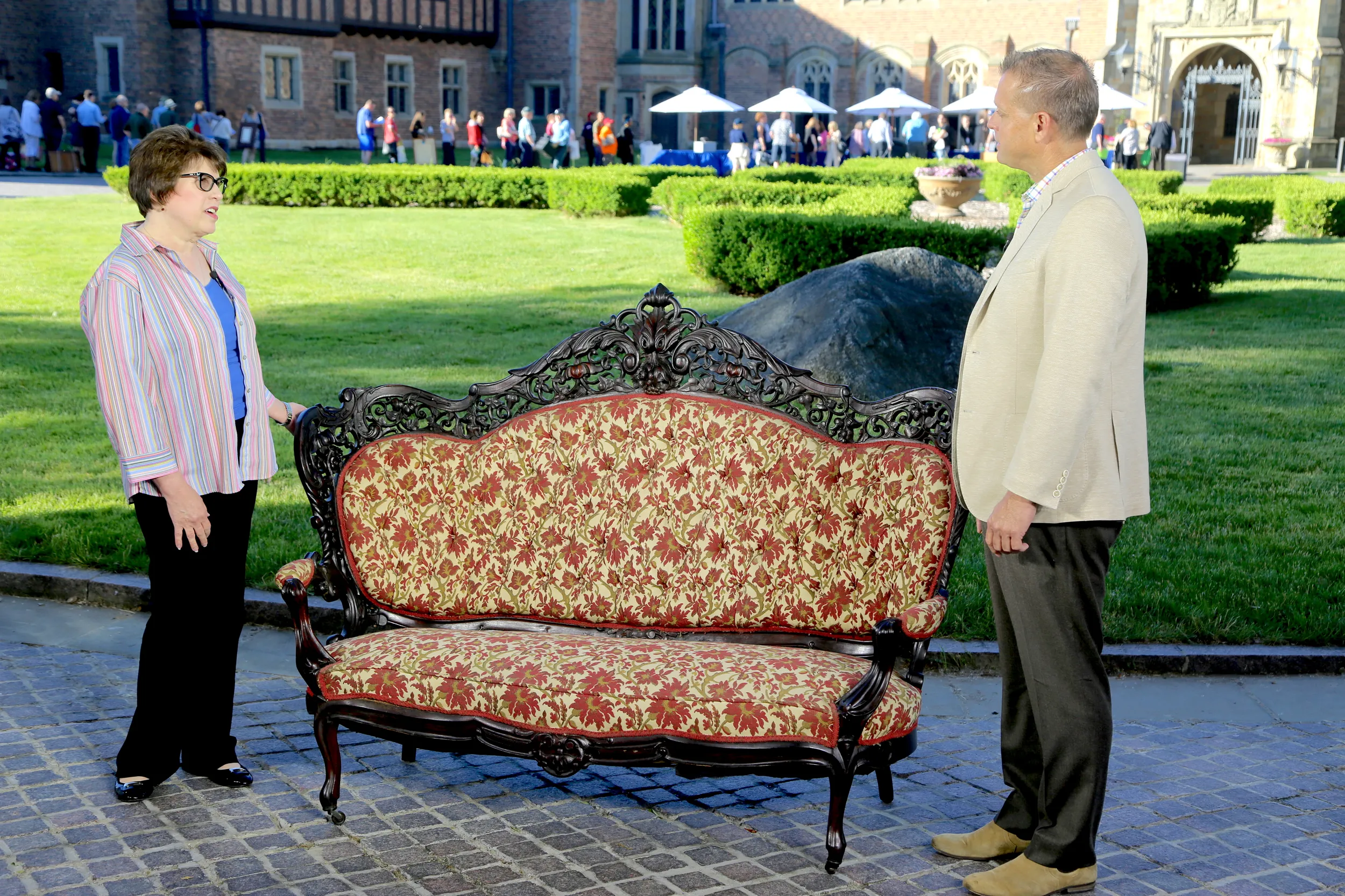GUEST: In the late '90s, we went down to a plantation auction outside of Natchez. We came back with two sofas-- this was one of them. So we fell in love with the crest. It was going for what at that time we thought was pretty cheap for a Victorian Rococo sofa. And we looked at each other, my husband and I, and I said, "What's wrong with it?" And he said, "I don't know." And it was, like, instantaneously, both of our hands went up, and next thing you know, here we have it. We have tried to find this exact pattern in books, but haven't been able to. I know it's not a Belter, but I'm not sure who the maker is.
APPRAISER: Okay.
GUEST: So if you have insight into that, that would be great.
APPRAISER: Sure. Well, this is an evolving story. It's very mid-19th-century, pre-Civil War. So 1850 to 1865.
GUEST: So pre-Civil War.
APPRAISER: It's New York.
GUEST: Okay.
APPRAISER: And it relates to a body of work that was produced there that's distinguished by these "C" and "S" scrolls, as you see here-- these alternating "C" scrolls here, and then we'll find these "S" scrolls throughout, as well as the naturalistic carving that you'll see flowing along this pierced carved crest. What makes it different is the lamination. If you see on the sides here, you can see these layers of wood. And this is similar to what we would see as plywood today. It's alternating the grains of thinly cut boards, gluing them together-- gives them strength, but it also gave you the ability to bend it and to carve it. Typically, when you said it's not Belter.
GUEST: Right.
APPRAISER: That's the one, it's, like, the generic term for this type of furniture-- "Is that Belter? Is that Belter?" Well, there was a lot of cabinetmakers active in New York. Historically, this set has been attributed to a New York firm by the name of J. & J.W. Meeks.
GUEST: Meeks, okay.
APPRAISER: And that was solely based on the fact that a sofa, similar to this, was given by Meeks to his daughter as a wedding gift. So the assumption has always been, well, Meeks must have made it. But as we learn, and as the story progresses, we learn that Meeks was more likely a dealer or a broker of furniture, representing other manufacturers or cabinetmakers in New York, and shipping them to various places. What we've learned since then, in the 1970s, when that was the first thought, was that these come in parlor sets. So you'd have a settee, a small sofa like this is, a large sofa, perhaps two armchairs, four side chairs, a table, and an étagère. None of the seating furniture or the tables have ever shown up labeled, but the étagères have shown up labeled.
GUEST: Okay.
APPRAISER: And they're not Meeks at all, or Belter, but by a gentleman by the name of Thomas Brooks.
GUEST: Okay.
APPRAISER: Who was a Brooklyn cabinetmaker. Do you mind if I ask what you paid for it?
GUEST: $3,000, which at the time was pretty pricy for us.
APPRAISER: I don't normally say this. If you bought something that long ago, typically today it's worth less. But that's about the price range we'd put it at auction-- $2,000 to $4,000.
GUEST: Okay. Okay, all right.

